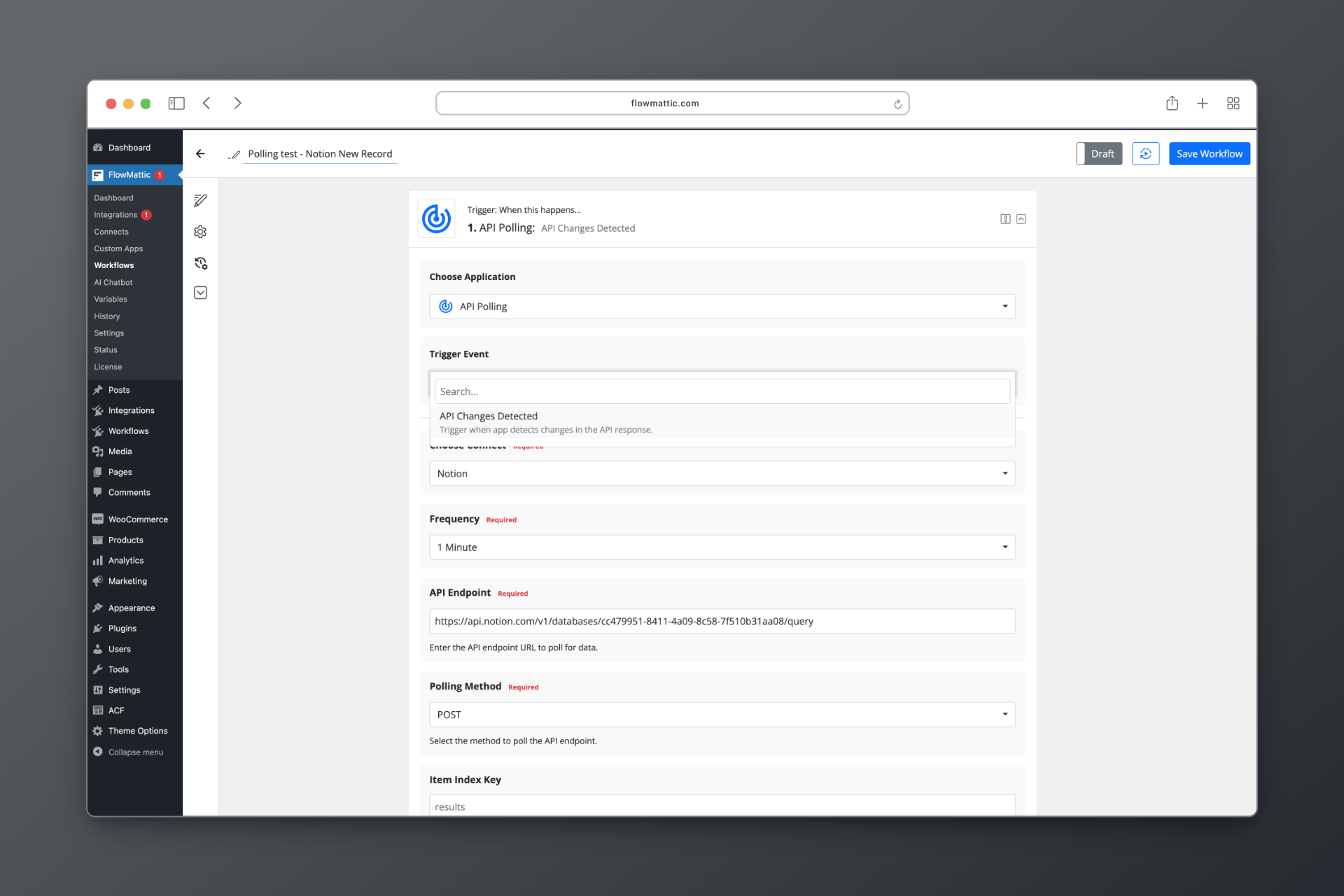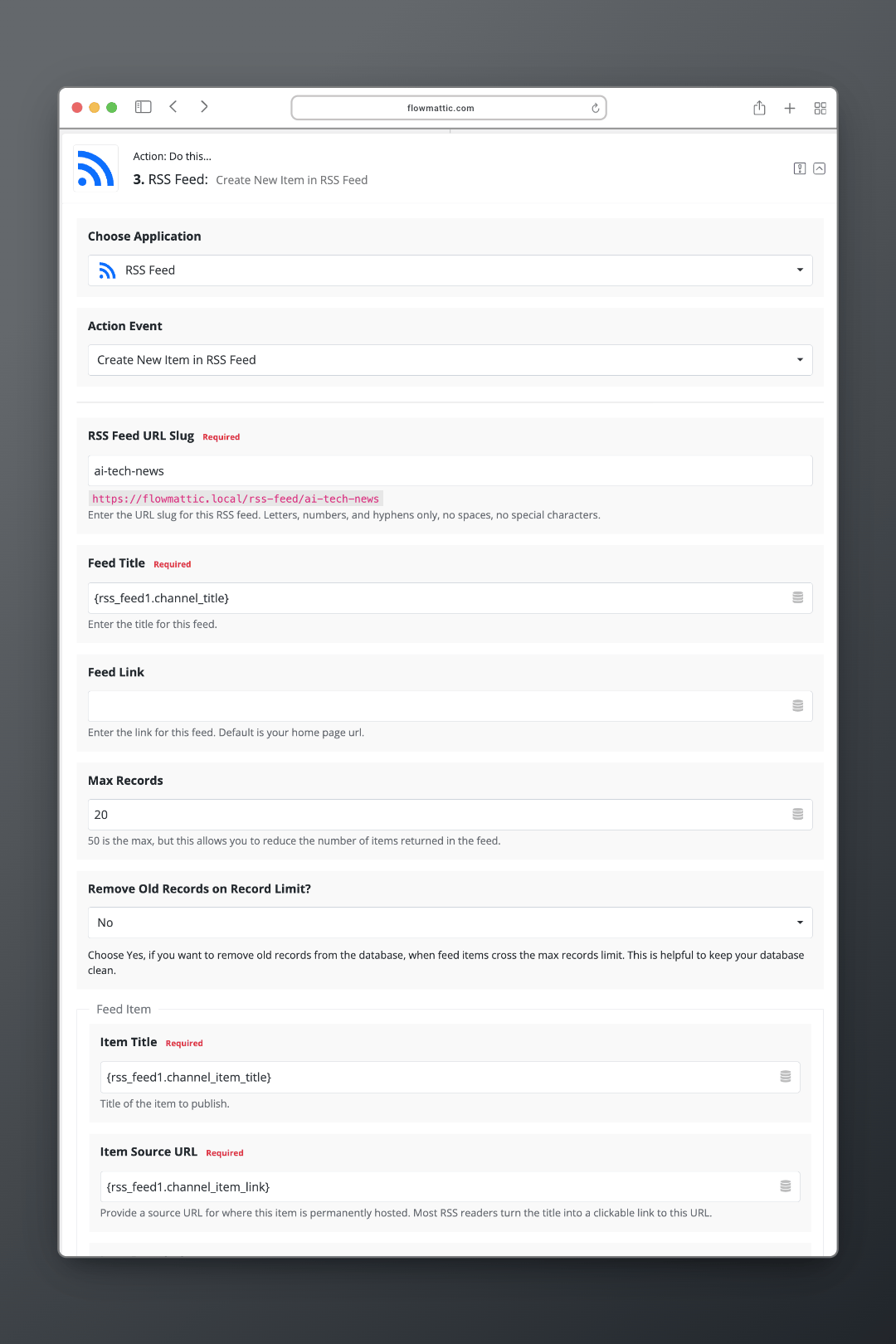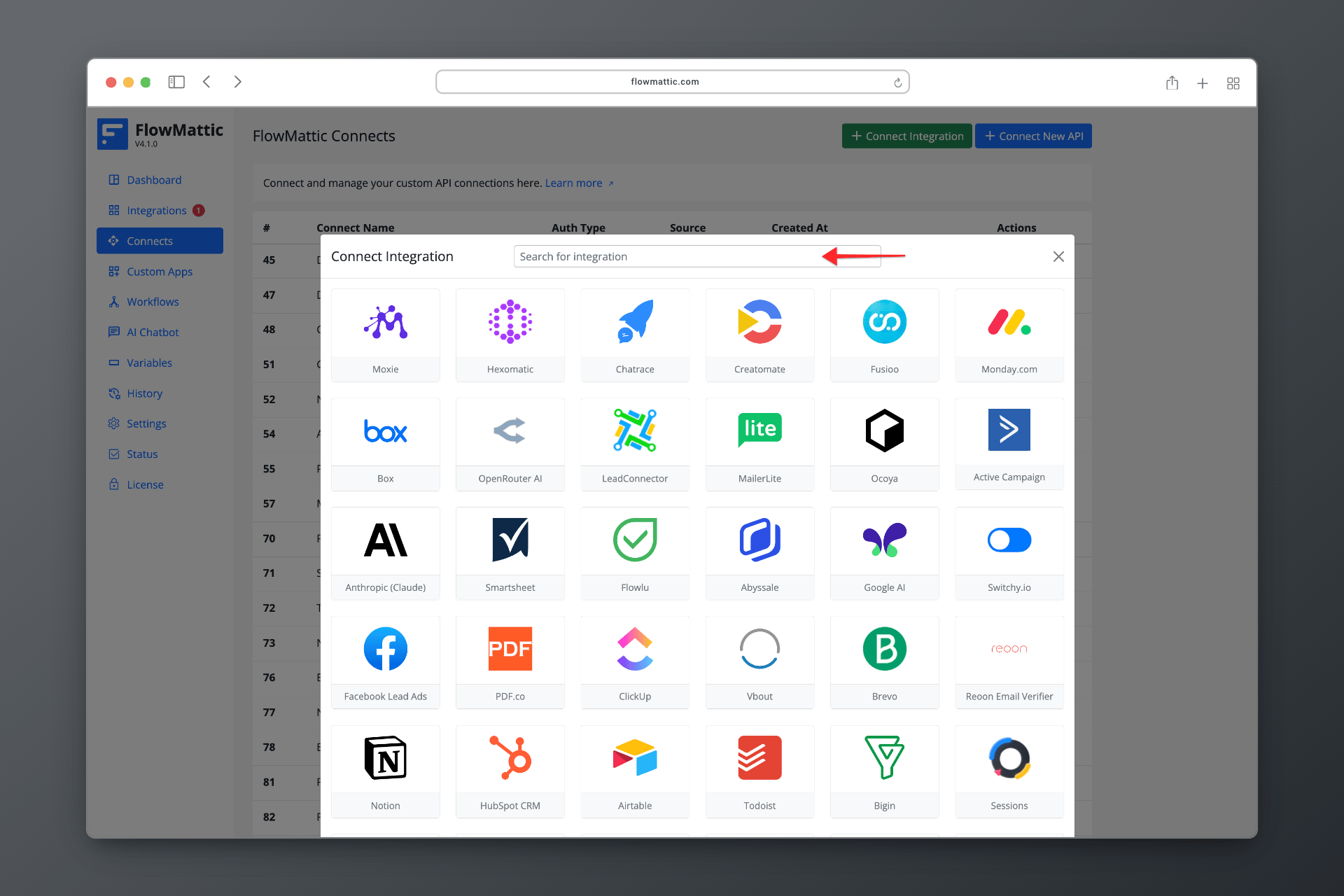Hello and welcome yet another update another awesome update of the year 2024 for your lovely FlowMattic. This update improves your dashboard performance a little, fixes some important bugs we introduced in 4.0 😉 and add two new core modules that many people were waiting for, and the feature that we’ve been working on for more than 8 months.
I know you’re eager to know about these groundbreaking features and what FlowMattic 4.1 brings to you. So, let’s have a look –
Introducing the API Polling Module
FlowMattic 4.1 brings a groundbreaking addition to its suite of features with the introduction of the API Polling Module. This innovative module simplifies the process of fetching new records from various services, including external APIs and RSS feeds, marking a significant leap in automation capabilities. By setting up a trigger just once, users can automate their workflows to execute autonomously whenever new content is detected in the connected API service or application.

This feature is particularly beneficial for businesses and developers looking to streamline their data synchronization processes, content aggregation, or real-time monitoring of information updates. The API Polling Module not only enhances efficiency but also ensures that your workflows remain dynamic and responsive to new data, keeping your operations proactive and informed at all times. With FlowMattic 4.1, staying updated with the latest content from your favorite services has never been easier or more seamless.
RSS Feed Trigger: Streamline Content Updates in FlowMattic 4.1
The RSS Feed Trigger is a notable feature in the latest FlowMattic 4.1 update, designed to enhance content monitoring and automation. This module empowers users to keep a vigilant eye on RSS Feeds, automatically triggering designated workflows whenever new items are added. The true power of this feature lies in its precision and scalability; it is engineered to initiate the workflow separately for each new item detected, ensuring no update goes unnoticed.

For instance, if an RSS Feed receives four new items, the RSS Feed Trigger will activate the corresponding workflow four times, once for each item. This level of detail ensures comprehensive coverage and allows for tailored processing of each piece of new content. Whether you’re aggregating news for a content platform, monitoring updates from industry-specific feeds, or integrating blog posts into your website, the RSS Feed Trigger streamlines these tasks by automating the detection and processing of new entries, making it an invaluable tool for staying current and efficient.
The API Polling and RSS Feed Trigger modules in FlowMattic 4.1 introduce customizable frequency settings, offering unparalleled control over how often new data is checked and processed. Users can tailor the frequency to their specific needs, with options ranging from as often as every 1 minute to as infrequent as once per day. No need to wait for 15 minutes or 8 hours to get updates. This flexibility allows for precise synchronization with external data sources, ensuring workflows are triggered at the optimal moment to capture and act on new information. Whether it’s for rapid content updates, timely data synchronization, or efficient resource management, the ability to customize the polling frequency ensures that your workflows are both responsive and resource-conscious, aligning perfectly with your operational tempo and data requirements.
In the FlowMattic 4.1 update, two pivotal actions have been introduced to enhance RSS Feed management and utilization: Create RSS Feed and Fetch RSS Feed. These actions expand the capabilities of workflow automation, making it easier for you to generate and retrieve content from RSS feeds directly within your automated workflows.

The Create RSS Feed action allows you to dynamically generate RSS feeds based on specific criteria or content sources within your workflows. This can be particularly useful for you as a content creator, marketer, or website manager who wishes to syndicate your content across various platforms or aggregate content from multiple sources into a single, accessible feed. By automating RSS feed creation, you can ensure that your content is consistently updated and distributed without manual intervention, increasing reach and engagement with minimal effort.
On the other hand, the Fetch RSS Feed action provides you with the ability to automatically retrieve and process content from existing RSS feeds. This can be instrumental for you in content curation, competitive analysis, and keeping abreast of industry news or updates. By integrating this action into your workflows, you can automate the collection of relevant articles, blog posts, or news items, streamlining content discovery and integration processes. This not only saves you time but also ensures that the latest content is always at your fingertips, ready to be utilized or shared, thereby enhancing the efficiency and responsiveness of your digital strategies.
PHP Array module update
PHP Array module has been enhanced with new actions, further extending its functionality and making array manipulations more intuitive and powerful within your workflows. Here’s a brief description of each new action:
- Convert List to Array
This action allows you to seamlessly convert a list of items into a PHP array format. It’s particularly useful when you have data in a sequential list format that you want to manipulate or iterate over using array functionalities, enhancing data handling and processing efficiency within your workflows. - Convert Array to List
With this action, you can transform a PHP array back into a simple list format. This is handy when you need to present array data in a more readable or linear format, or when the subsequent steps in your workflow require data in a list rather than an array structure, ensuring flexibility in how you manage and output data. - Insert Value at Index
This action provides the capability to insert a value into a specific position within an existing array. It’s invaluable for maintaining ordered data or when you need to update an array dynamically based on workflow logic, allowing for precise control over your data structure and content.
FlowMattic Variables update
In the FlowMattic 4.1 update, the already powerful Variables feature has received significant enhancements to offer even more flexibility and functionality in workflow automation. Notably, you now have the ability to call PHP functions directly as the value for FlowMattic Variables. For example, using PHP:time() as a variable value will execute the PHP time() function, allowing the variable to dynamically capture and store the current timestamp. This enhancement opens up a plethora of possibilities for incorporating real-time data and complex logic directly into your workflows, making them smarter and more responsive to the current context. Additionally, FlowMattic 4.1 introduces two new system variables specifically designed to capture the current date and time in the universally recognized ISO 8601 format. These enhancements ensure that your workflows can effortlessly handle and manipulate date and time information, providing standardized and precise temporal data for scheduling, logging, or any time-sensitive operations, further solidifying Variables as an indispensable tool in the FlowMattic suite.
Webhook All Data Capture in Response
Many of you asked, and we listened! The latest update to FlowMattic introduces a significant improvement in how webhook data is handled, making the integration and automation process even more seamless and efficient. With this update, data captured by webhooks is now readily available in JSON format in the response. This advancement simplifies the task of forwarding the data received in webhooks to other systems, applications, or workflows. By providing the data in JSON, a widely-used and easily-parseable format, it streamlines the process of data manipulation and integration, ensuring that the information can be seamlessly passed along and utilized in subsequent actions or external systems without the need for complex data transformation steps. This enhancement not only saves time but also increases the reliability and flexibility of automations that rely on webhook data, opening up a broader range of possibilities for workflow customizations and integrations.
Search Apps in FlowMattic Connect
The introduction of a search feature within the Connect Integration modal in FlowMattic is a seemingly small yet incredibly impactful update, significantly enhancing the user experience. This functionality allows users to effortlessly search and find their desired integrations from an extensive list of available options, including custom APIs, SaaS applications, and official integrations. By streamlining the process of locating and connecting to various services, this feature not only saves valuable time but also simplifies the workflow setup process, making it more accessible and efficient. The centralized authentication hub, paired with the ease of searching for integrations, ensures that users can quickly set up and manage their connections, fostering a more intuitive and productive environment for automating complex workflows.

Phew! I’m not done yet. There are many other small improvements and bug fixes we worked on to make this release a rock solid. Take a look at our changelog for more details on 4.1.0 update and all other releases as well.
If you have any questions, need any help, please feel free to write to support, or join our Facebook Community, which is more like a FlowMattic family!
With regards,
Nitin Yawalkar
Founder, FlowMattic